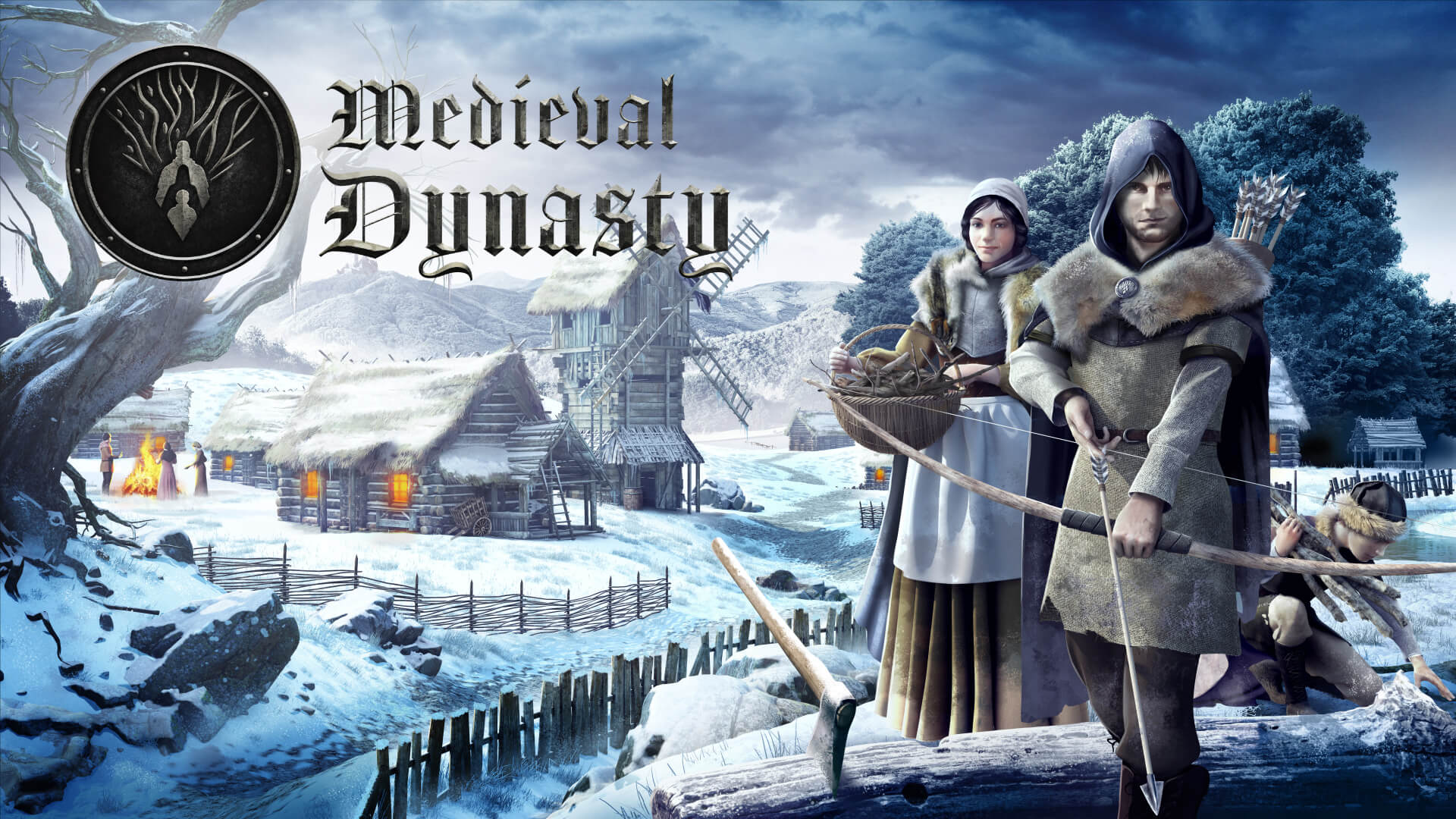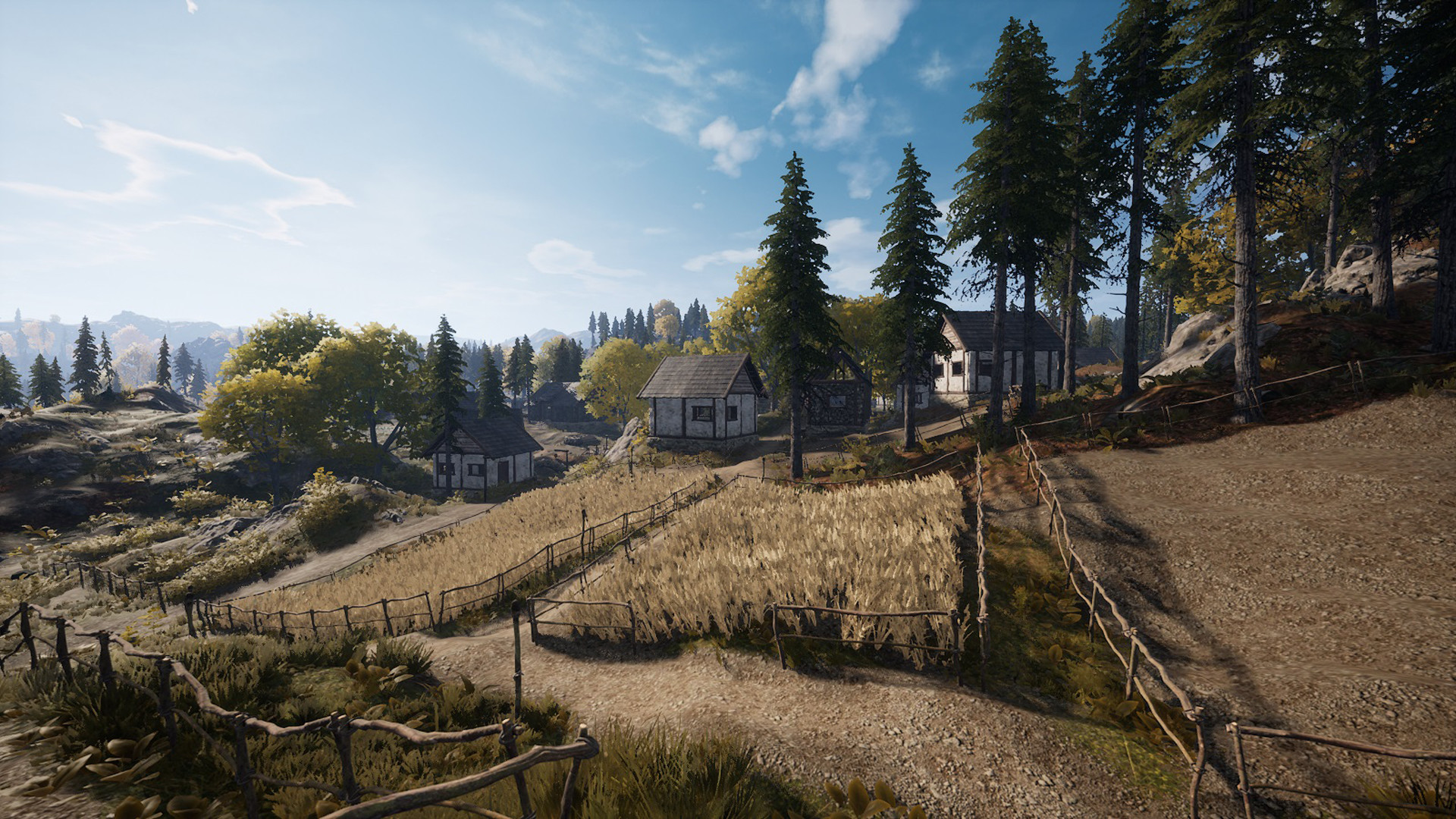
Medieval Dynasty is a first-person survival game that mixes components of this genre with elements of city management and social simulation. If you’ve ever played the Harvest Moon Games and Kingdom Come, I would best describe this game as a combination of the two.
AT A GLANCE
GENRE: Action, Adventure, RPG, Simulation
DEVELOPER: Render Cube
PUBLISHER: Toplitz Productions
RELEASE DATE: 23 September 2021
FINAL SCORE: 8/10
The game puts us in the shoes of the nephew of a person of certain reputation who arrives in the Valley only to find out that his uncle was killed by bandits. You are greeted by Uniegost, the castellan, who is going to act as the main mission giver and your guide to the village that you have inherited.
Medieval Dynasty leaves a certain degree of freedom from the beginning, but a lot of the mechanics are locked behind story missions. After the first few hours, however, the main objective becomes a loose guideline and instead, you are free to pursue your own goals.
Unlike other games in the survival and crafting genre, there are no procedural worlds here, but rather a pre-designed map based on medieval Europe. Everything from the flora, fauna, to the handful of cities, are all loosely based on what they would be like a few hundred years ago.

The game allows us to start our new life anywhere on the extensive map, as long as we don’t do it too close to another village. For this, you have to start collecting the necessary materials to make rudimentary tools such as an ax to obtain firewood or spears with which to hunt. Also after a few brief introductory missions, we can start building our first house where we can cook, sleep, and store our things. In addition to trading with the villagers of each small town, we will receive missions that reward us with coins, food dishes, or knowledge about new constructions.
Being a survival game we have to take into account our energy level, hunger, thirst, and health, and your maximum inventory. This can play a decisive role when we are carrying out a task such as hunting or building. The weight, for example, will play against us if we are too loaded and need to collect more logs to build a house. So it is convenient that we build our buildings near a deposit or the trees.
In terms of the number of buildings you can build, you will be limited by the reputation of your dynasty. By carrying out missions for the different inhabitants of the towns, your dynasty will increase its reputation and the limit of buildings will increase. This is going to allow us to expand even more and in this way, we can incorporate more villagers to work in our village.
We also have to take into account that as I said before, if we do not have a correct administration of our village, the happiness of the people will go down and they will start abandoning the village. To make sure this doesn’t happen we have to see that the villagers have enough food, a roof, and wood to get through the cold.
There are also other factors, such as the 4 seasons of the year, and you have to prepare for the changes of the seasons. Every certain number of days the game will change and you have to take this into account for almost everything we do. For example, some crops can be planted only in one season and harvested in another.
On the other hand, the cold will affect you in winter, so you have to be careful and wear warmer clothes if you don’t want to have problems when the snow starts falling. But that is not all, since we should also take into account having firewood so that everyone can be protected from the cold.

Something fundamental that you have to know about Medieval Dynasty is that it is not only limited to construction and survival, but also an important part of resource management. The social sim aspects on the other hand are dynamic and will require you to experiment by trial and error.
The NPCs are quite generic at the moment, who have different skills in different areas and who are going to help us to populate our village. Although we will have to unlock each new building and its improvements, these villagers can follow us if we give them a house and a job. Chatting with the characters not only increases the level of approval we have with that person but also lets us see if it will help us for the tasks we have to accomplish. Not only are we going to want more villagers to come, but we are also going to want to give them the tasks they perform best for both their happiness and our development.
Visually the game is gorgeous, and even though the animations do feel stiff at times, they are still beautiful. I did encounter some glitches here and there, but for a game with so many mechanisms such as Medieval Dynasty, the bugs are quite manageable.
The management mechanics could have done with a bit more autonomous functions and I would have really appreciated better village AI that was capable of doing more things by themselves. A lot of people like micromanaging, however, and for them, this game will feel ideal, but those who were expecting their village to become a bit more self-sustaining after a dozen or so hours will find themselves a bit disappointed. For example, 40 hours into the game, I had a fairly prosperous town under my belt, and I still had to rush to defend my villagers from small groups of bandits.
If you can get over the micromanagement, the game feels extremely cozy and comforting. There’s also a sense of pride and accomplishment seeing your small struggling hamlet turn into a bustling metropolis.
If the huge amount of gameplay mechanics here seems daunting and intimidating to you, don’t worry, you’re not alone. The game does a fairly good job at explaining some of the basic stuff you can do, but you’ll have to figure out the rest on your own. Thankfully there are quite a few configurable options available so that you can learn things at your own pace.







